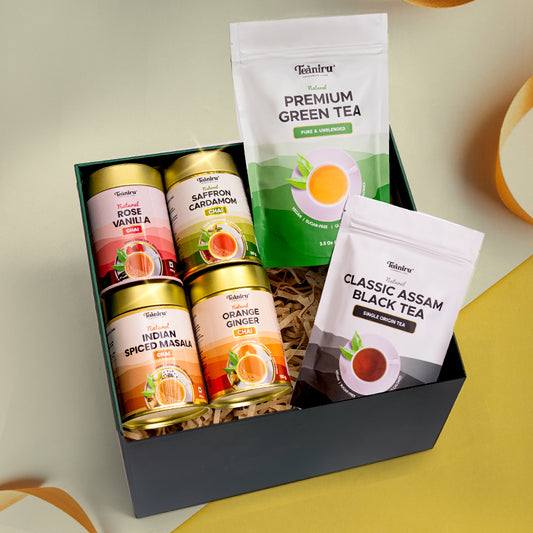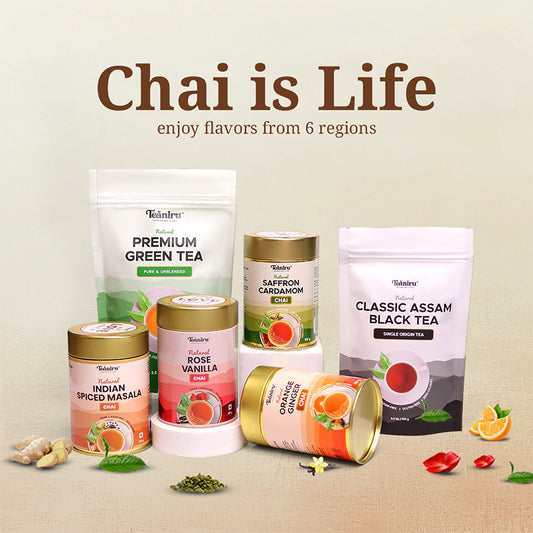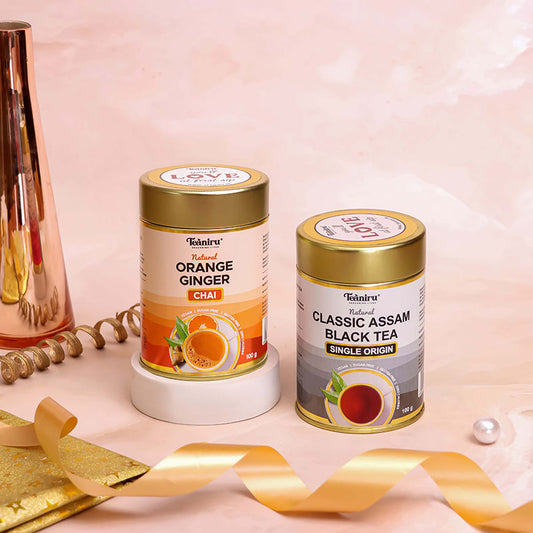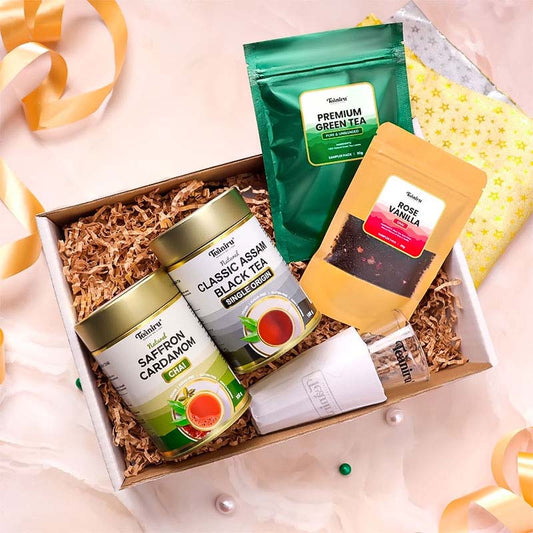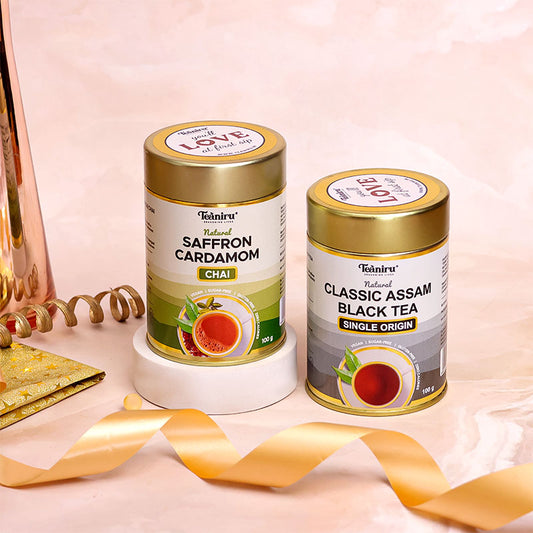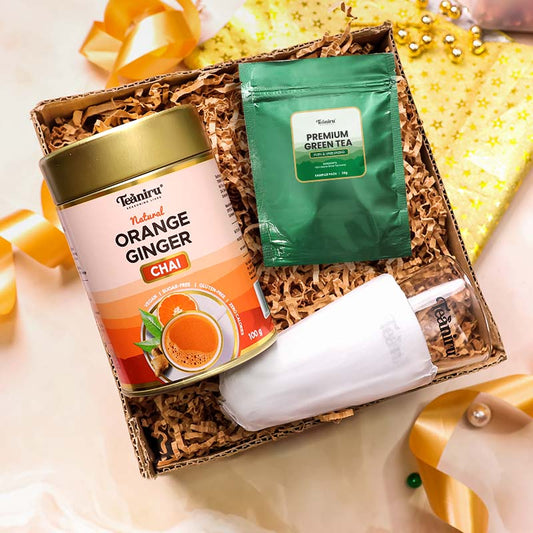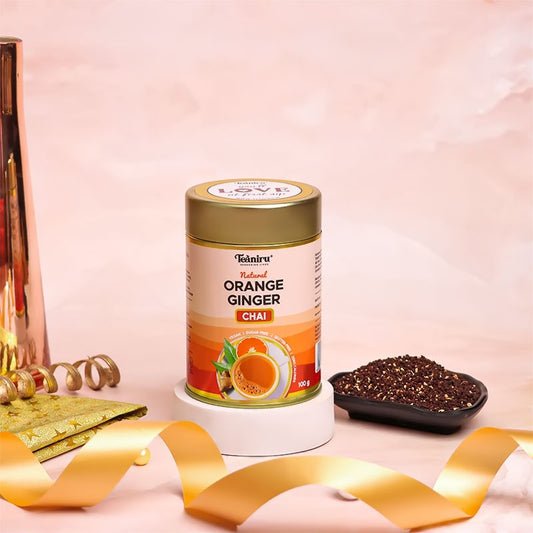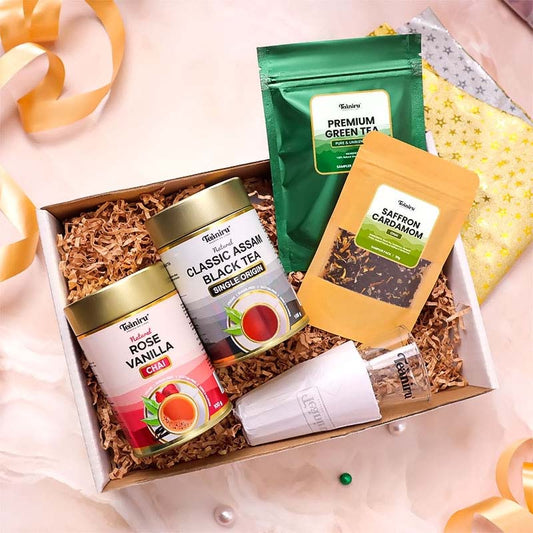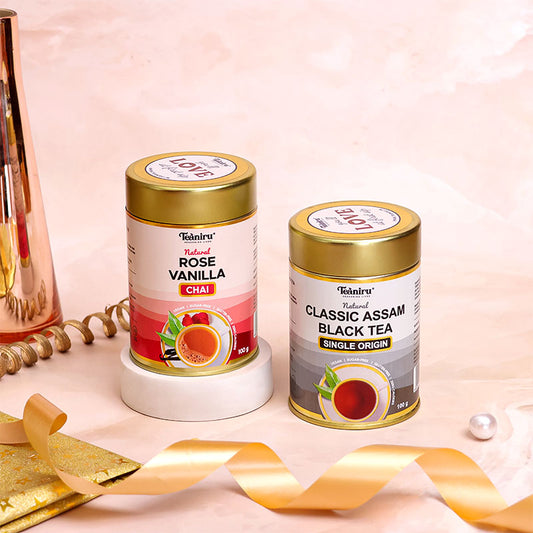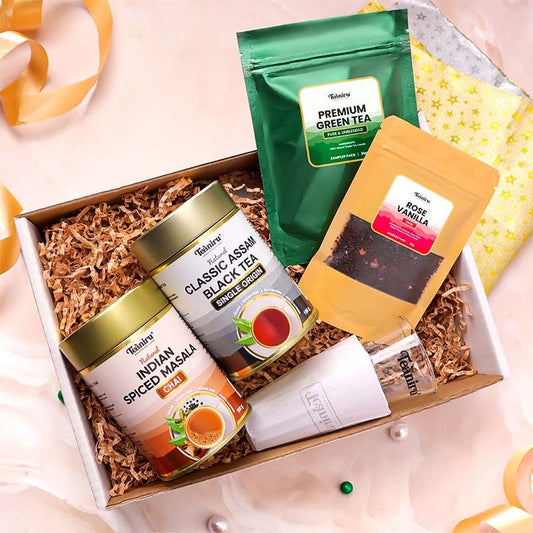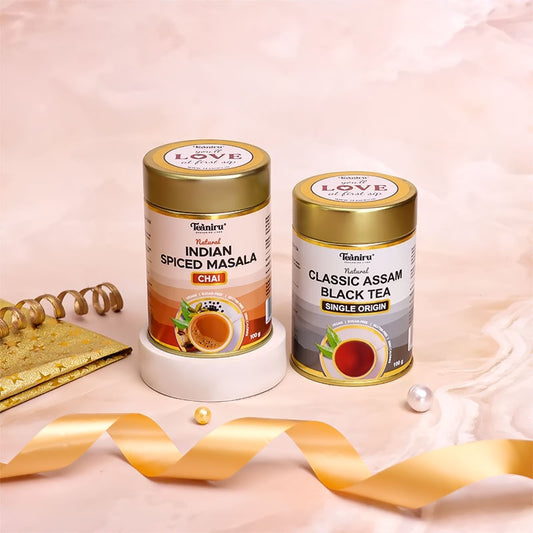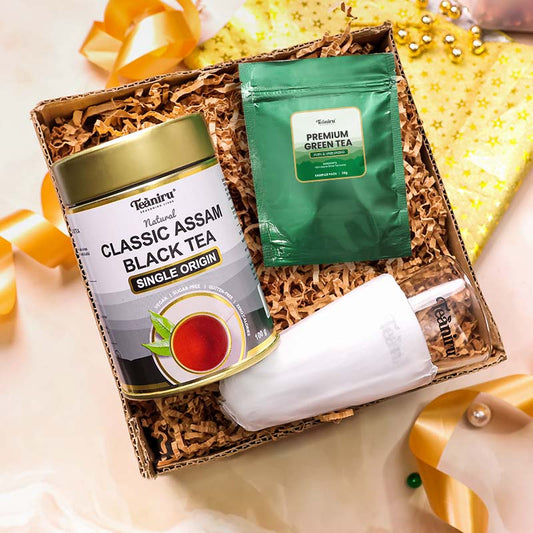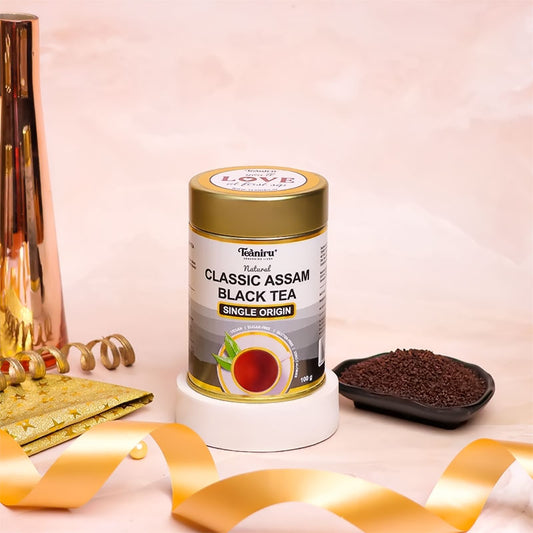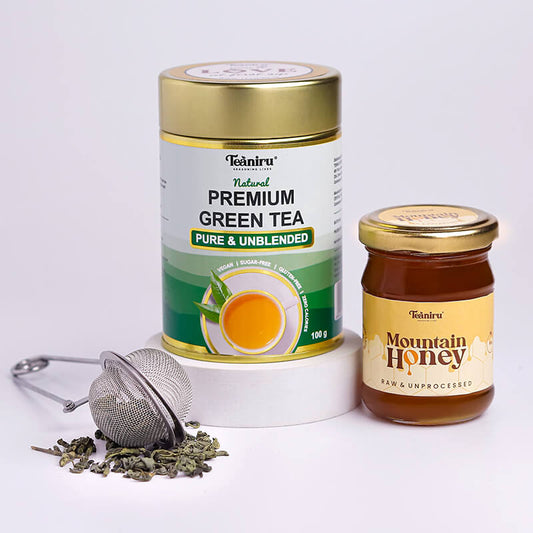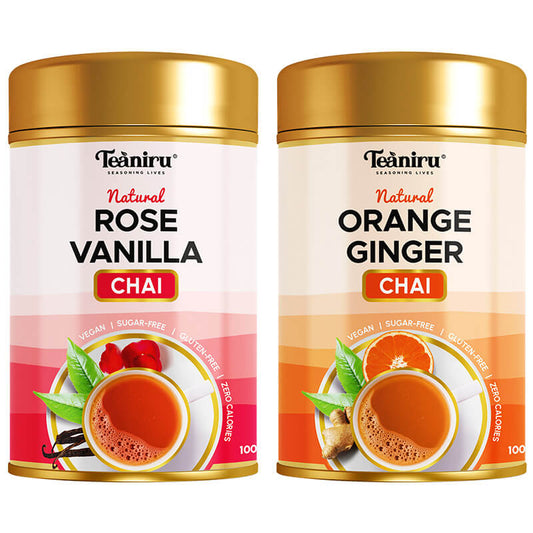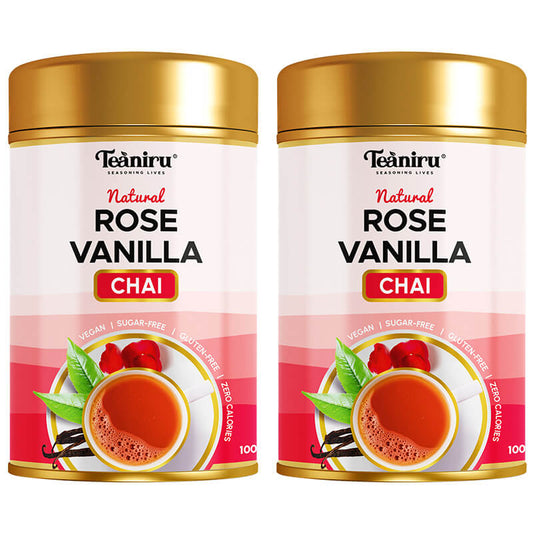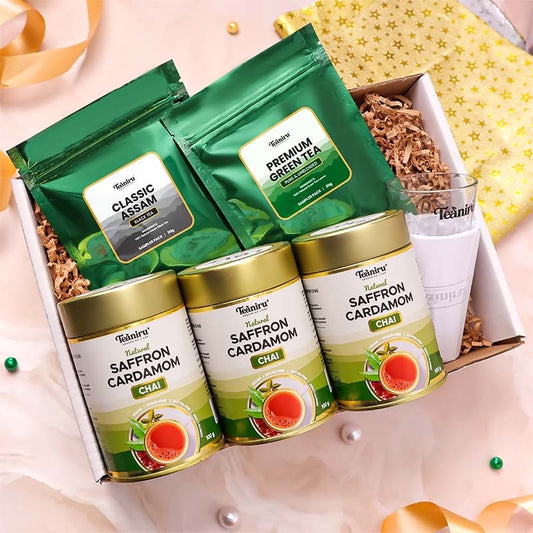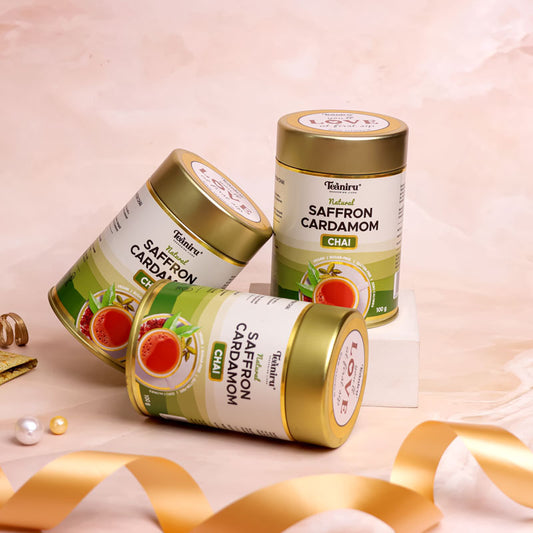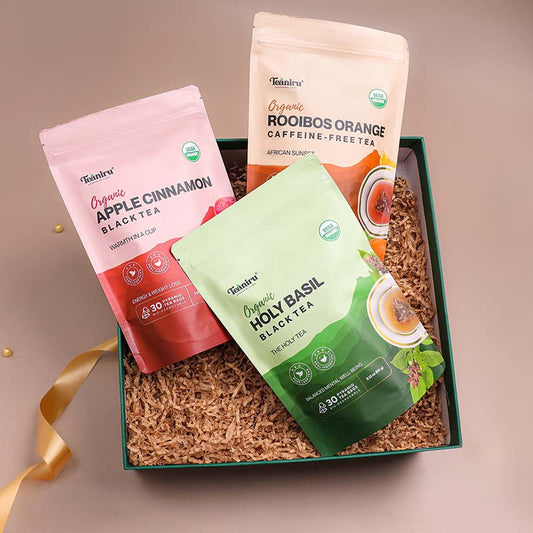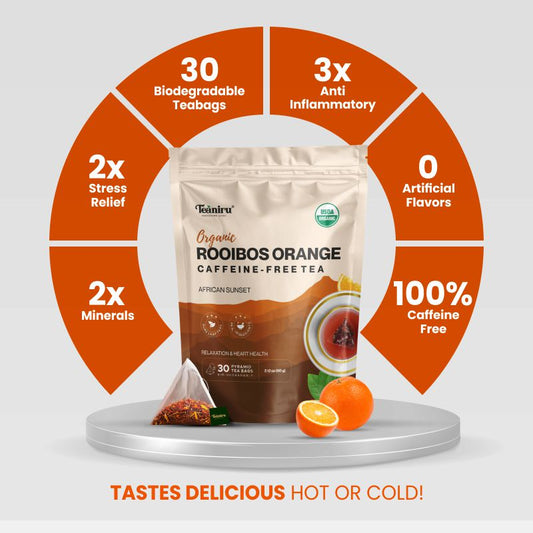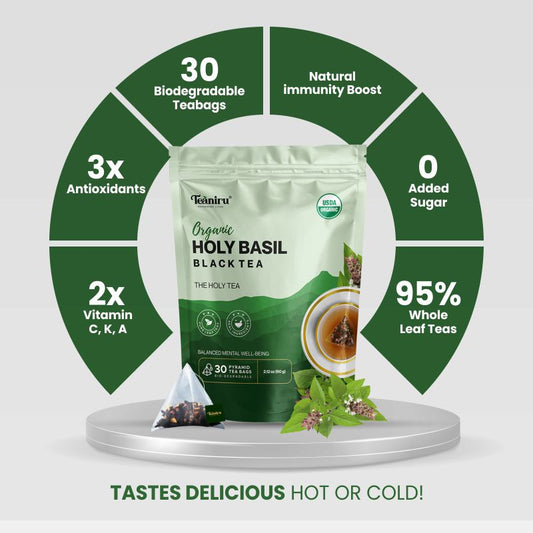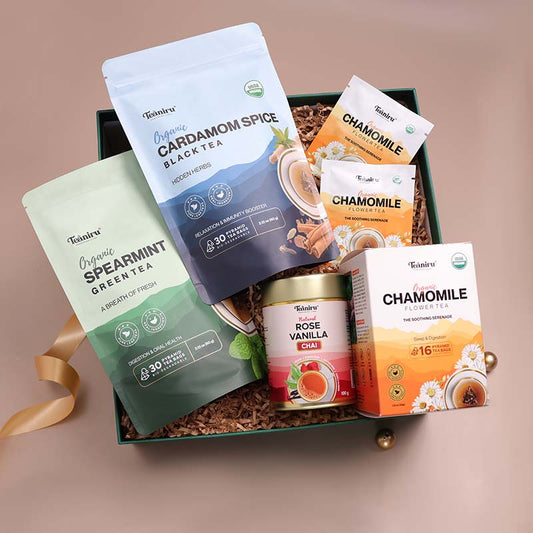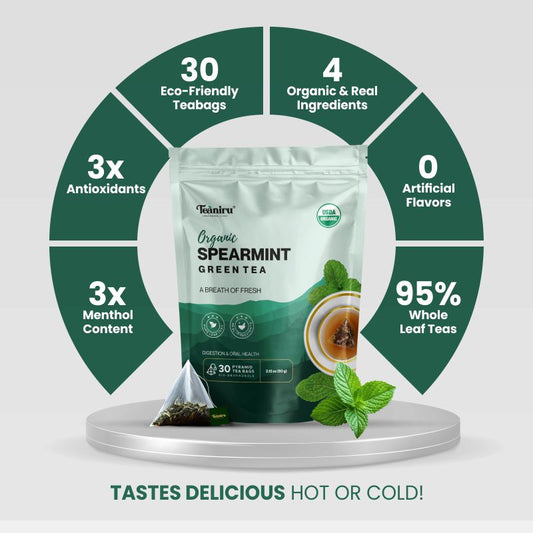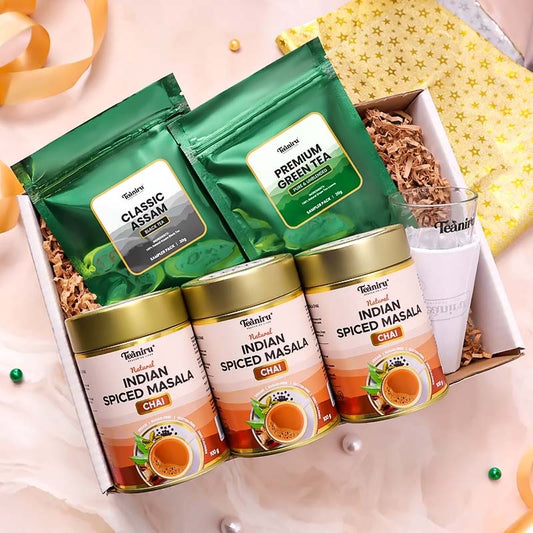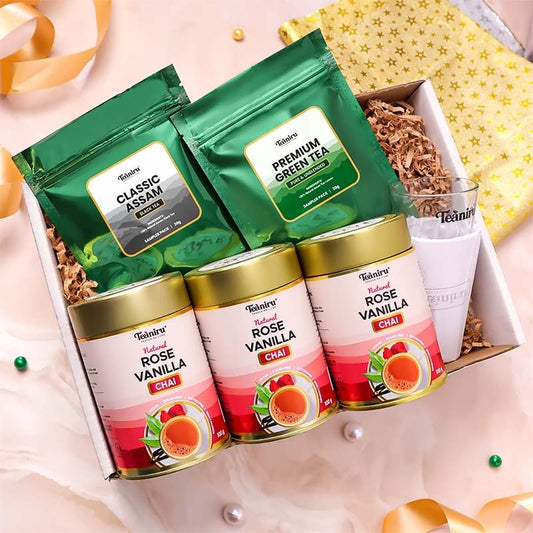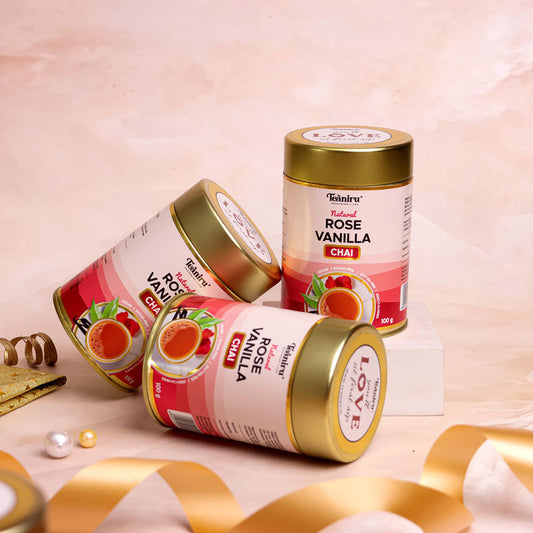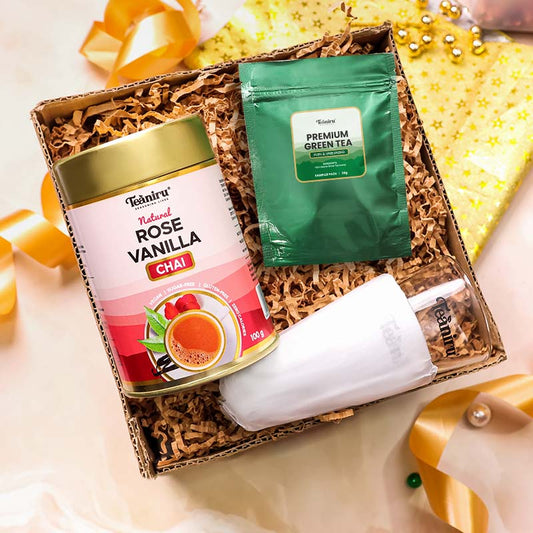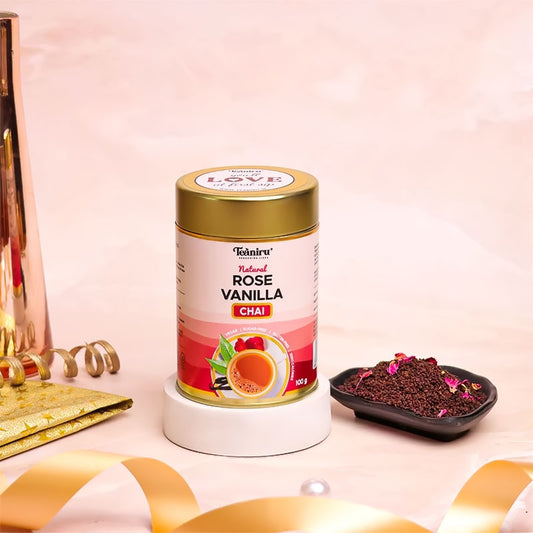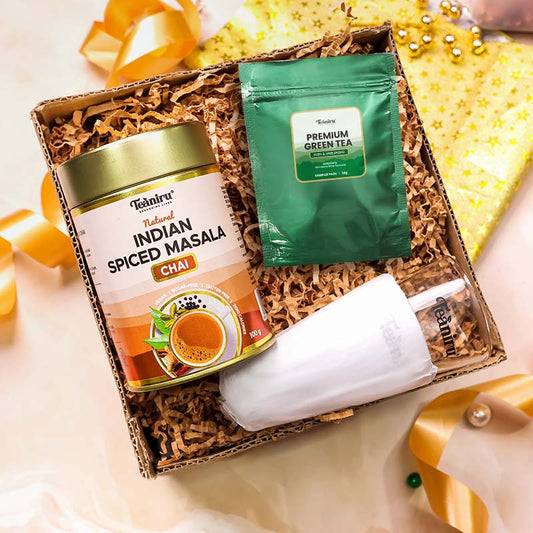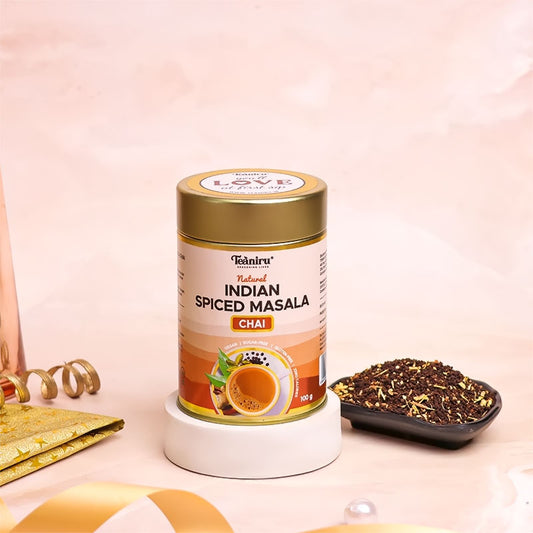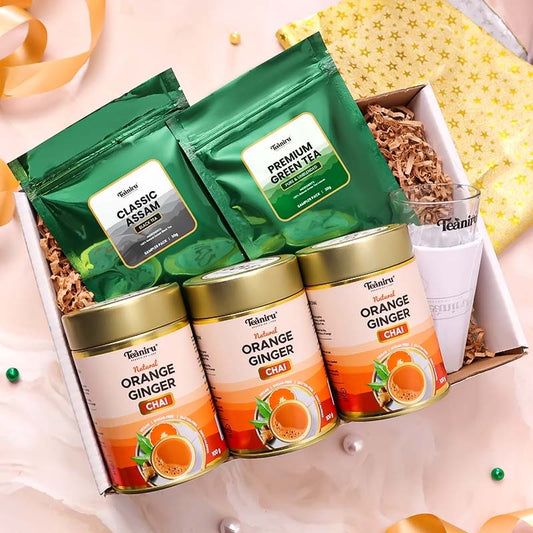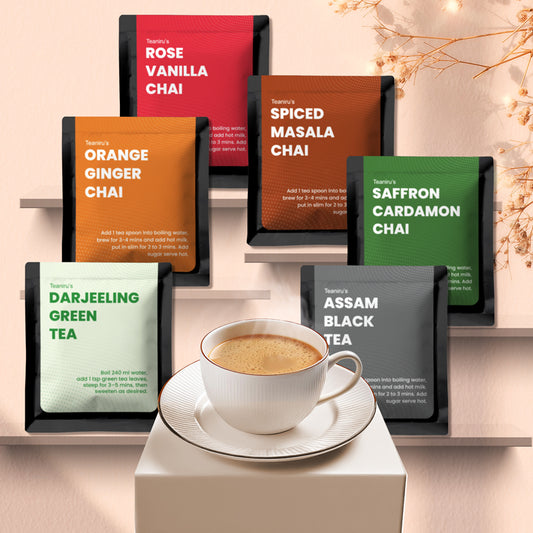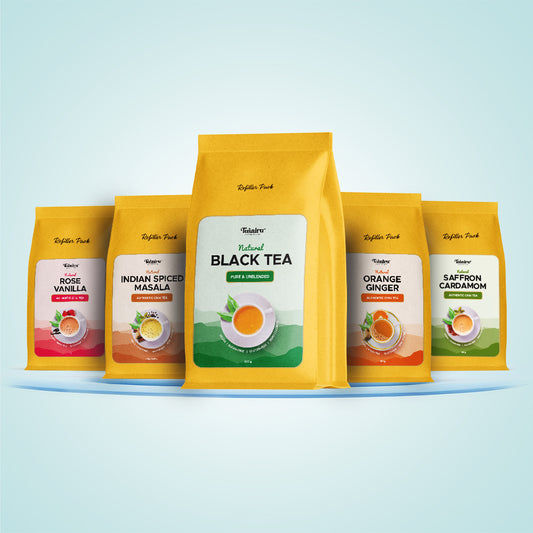Flavoured Tea Blends
-
Chai is Life - A Celebration of Indian Chai
Regular price ₹ 1,499Price ₹ 1,499 Regular priceUnit price / per₹ 2,299257 reviewsAdd to cart 34% OFF -
Regular price ₹ 699Price ₹ 699 Regular priceUnit price / per
₹ 85822 reviewsAdd to cart 18% OFF -
Regular price ₹ 699Price ₹ 699 Regular priceUnit price / per
₹ 858232 reviewsAdd to cart 18% OFF -
Regular price ₹ 499Price ₹ 499 Regular priceUnit price / per
₹ 54023 reviewsAdd to cart 7% OFF -
Regular price ₹ 728Price ₹ 728 Regular priceUnit price / per
₹ 84822 reviewsAdd to cart 14% OFF -
Every Home’s Special Tea Combo Pack
Regular price ₹ 699Price ₹ 699 Regular priceUnit price / per₹ 858222 reviewsAdd to cart 18% OFF -
Everyday essential Tea combo pack
Regular price ₹ 499Price ₹ 499 Regular priceUnit price / per₹ 540222 reviewsAdd to cart 7% OFF -
Regular price ₹ 549Price ₹ 549 Regular priceUnit price / per
₹ 69943 reviewsAdd to cart 21% OFF -
Regular price ₹ 499Price ₹ 499 Regular priceUnit price / per
₹ 540222 reviewsAdd to cart 7% OFF -
Regular price ₹ 899Price ₹ 899 Regular priceUnit price / per
₹ 1,297222 reviewsAdd to cart 30% OFF -
Regular price ₹ 1,499Price ₹ 1,499 Regular priceUnit price / per
₹ 1,950120 reviewsAdd to cart Sold out -
Regular price ₹ 2,199Price ₹ 2,199 Regular priceUnit price / per
₹ 2,499121 reviewsAdd to cart Sold out -
Regular price ₹ 1,599Price ₹ 1,599 Regular priceUnit price / per
₹ 1,999140 reviewsAdd to cart Sold out -
Regular price ₹ 899Price ₹ 899 Regular priceUnit price / per
₹ 1,29722 reviewsAdd to cart 30% OFF -
Regular price ₹ 989Price ₹ 989 Regular priceUnit price / per
₹ 1,39723 reviewsAdd to cart 29% OFF -
Regular price ₹ 529Price ₹ 529 Regular priceUnit price / per
₹ 590226 reviewsAdd to cart 10% OFF -
Regular price ₹ 499Price ₹ 499 Regular priceUnit price / per
₹ 540222 reviewsAdd to cart 7% OFF -
Regular price ₹ 899Price ₹ 899 Regular priceUnit price / per
₹ 1,297222 reviewsAdd to cart 30% OFF -
Regular price ₹ 279Price ₹ 279 Regular priceUnit price / per
₹ 4991 reviewAdd to cart 44% OFF -
Flavored Chai & Black Tea (Subscription Combo)
Regular price ₹ 489Price ₹ 489 Regular priceUnit price / perNo reviewsAdd to cart
Tea Blending Process
The tea blending process is an art that involves various methods to produce a new commercial product with a unique flavor and aroma
This practice is most common with black tea, often blended to produce tea bags with consistent taste and quality. This can also happen with Pu-erh teas, which is a unique type of fermented tea and is known for its distinctive fermentation process which involves two types:
-
Raw (sheng) Pu-erh – This is an expensive and slow process where the fresh tea leaves are crushed and allowed to ferment for years
- Ripe (Shou) Pu-erh - This is a rapid fermentation process where leaves are piled up, moistened, and regularly turned to promote microbial activity, resulting in a rich, earthy flavor within a few months to a year
The important type of tea blending is the commercial blending, which is essential for maintaining a consistent taste and flavor. This ensures that consumers won’t detect any differences in taste from one batch to another when they purchase the tea
The blending process can be broken down into several steps, each contributing to the overall outcome
1. Selection of Base Tea & Ingredients
The first step in the tea blending process is selecting the base tea, which is important because it constitutes 50% to 75% of the final mixture
The choice of additional ingredients is made to complement the base flavor
Base Tea:
- Black Tea
- Oolong Tea
- Herbal Tea
- White Tea
-
Green Tea
Ingredients: Herbs, Spices, Fruits, Varieties of Flowers
2. Measuring Proportion
The measuring proportion in the tea blending process refers to the precise ratios or measurements of different tea leaves, herbs, spices, and flavoring agents that are combined to create a well-balanced and flavorful tea blend
These proportions are typically expressed as ratios or weight measurements to ensure the blend's taste, consistency, aroma, and overall quality
3. Mixing Process
The mixing process of tea leaves with ingredients is the act of combining substances to produce a uniform mixture
The process of mixing can be done manually or with equipment
For larger batches, rotating drums are used to mix tea effectively without damaging the leaves
For smaller batches, manual mixing involves using bowls and scales for the accurate measurement of the ingredients
4. Quality Control
After the tea is blended, it undergoes a tasting session, where the consistency, freshness, appearance, aroma and the flavor profile are tasted by professionals and adjusted based on the above to ensure that the final blend meets the highest quality standards
5. Packaging Process
Packaging is the final stage in the production process. After achieving the desired blend, the tea is prepared for sale
The packaging choice varies based on the type of tea, such as tea bags or loose leaf
For tea bags, machines are used to measure and fill individual compartments with pre-measured amounts of tea leaves, which are then sealed and cut into their final shape. The tea bags are mostly biodegradable which does not affect the environment
When packaging loose-leaf tea, machines ensure the leaves are evenly divided. They also seal the containers to keep out air and moisture
Here are the main types of packaging used:
-
Pouches: Made from biodegradable paper, these protect the tea from moisture and air. Ziplock bags or reusable pouches are great for those who buy loose tea often
-
Boxes: Duplex paper boxes are popular in stores and look appealing to shoppers
-
Bottles: Plastic or glass bottles are used for instant tea, keeping it safe from outside elements
- Metal Tins: Metal tins are an eco-friendly choice for loose tea. They can be reused and recycled. Their airtight lids help keep the tea fresh for longer
Popular Varieties of Blended Tea
There are many popular varieties of blended tea, including
Breakfast Tea
Breakfast tea or English Breakfast tea is a traditional blend of black tea originating from Assam, Ceylon and Kenya. Assam black tea is most popular, and India being the largest exporter of black tea
Russian Carvan
This popular tea blend originated from the tea trade between Russia and China
Jasmine Green Tea
Jasmine is most used to flavor green tea to produce Jasmine tea
Genmaicha
Genmaicha is a Japanese brown rice green tea consisting of green tea and roasted brown rice. It is often referred to as “Popcorn tea” as few grains pop up during the roasting process
The Bottom Line
In conclusion, healthy tea blends prioritize the use of natural ingredients that not only promote wellness but also minimize environmental impact. On the other hand, while artificial tea blends may offer convenience and cost-effectiveness, they often compromise on quality, safety, and long-term health effects.

